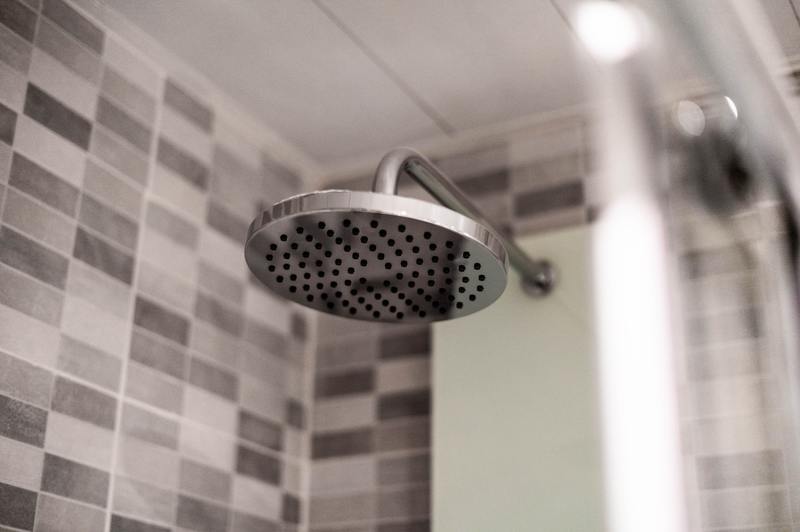Have you noticed that your bathroom’s grout has turned red, pinkish, or a delicate shade of orange sherbet? Here’s how to get rid of red mold in shower.
Probably the good news is, it isn’t a lethal mold. The bad news is that it is caused by bacteria.

Keep reading, check out what’s developing in your shower and how to get rid of it. Here are some helpful tips about how to remove mold from stainless steel that you should check out too.
What is red mold and how does it affect you?
What is the red or pink mold in the shower that you’ve seen? It may appear to be mold, but it’s a biofilm generated by Serratia marcescens bacteria.
Since this form of bacteria is airborne and thrives in moist environments, your shower walls are an ideal place for a bacterial colony to thrive. Thus, bacteria feed on soap scum, which can exacerbate the condition.
Even though it’s commonly referred to as pink, this sort of biofilm is reddish in hue. The actual color varies from light pink to dark red, and it can even appear orange at times.
These simple steps on how to clean mold from washer gasket will surely be a good help along the process.
Is red mold a health risk?
Red mold is usually safe, especially if you’re in good health. You won’t have any problems rubbing up against it in the shower.
However, it can create health problems if it enters your body through your eyes or wounds, especially in people who already have weaker immune systems. Urinary tract infections, bladder infections, and pneumonia are all possibilities.
Cosmetic deterioration is another issue. If the pinkish slime in the shower and other bathroom spaces is not removed, it can permanently discolor the surfaces. No matter how hard you wipe and scrub, your bathroom will remain filthy.
Red Mold Removal Techniques
Reddish mold is generally simple to eliminate using household cleaners or household products.
Step #1. Chlorine bleach cleaners can assist in getting rid of the reddish-pink gunk in the shower. Allow the cleaner to sit for a bit after spraying it on.
Step #2. To remove the biofilm, use a scrub brush, but avoid using anything too abrasive, as this can cause microscopic scratches that allow germs to grow in more places.
Step #3. If you refuse to use professional cleaners, mix four parts baking soda with one part dish detergent to produce a paste. Rinse thoroughly after scrubbing with the paste.
Step #4. It is optional for you to use a solution of equal parts vinegar and water and scrub with it after allowing it to soak in.
Step #5. After you’ve removed all of the bacteria, rinse thoroughly.
Step #6. If your shower curtain is washable, it’s also a good idea to wash it. Spray the cleaner on the vinyl shower curtain and scrub it clean, just as you would the shower walls.
Red Mold Prevention
Now that the existing red stains in shower areas have been removed, it’s time to prevent them from reappearing.
Tip #1. To avoid the spread of Serratia marcescens bacteria to other surfaces, encourage people to wash their hands frequently, especially after using the bathroom.
Disinfecting your shower surfaces helps to get rid of any bacteria that isn’t visible and prevents it from regrowing. Spray the walls with the solution (mixture of bleach and water) and let it sit for about 10 minutes.
Brush the surfaces and thoroughly rinse them
Tip #2. Maintain a dry environment. Give it some time to let the shower walls dry each usage, as Serratia marcescens need moisture to grow and spread.
You can use a squeegee or a cloth to perform the job in seconds.
Pink or red mold can also be avoided in shower areas by keeping the surfaces as dry as possible, as bacteria thrive in damp environments. After each use, dry the walls with a squeegee or a cloth.
Tip #3. Close and straighten shower curtains to speed up the drying process. At least once a month, wash the curtains and liners.
Tip #4. Remove soap scum at least once a week. Soap scum contains body oil, which is a food source for mold and germs.
We suggest removing any soap scum or residue from soap and shampoo to eliminate bacteria’s feeding source. When you see fresh residue, wipe it away with a moist paper towel.
Tip #5. After each usage, wipe away drips and drops of liquid soap, shampoo, and conditioner from the shower or tub’s walls and floor.
To eliminate further soap scum, clean the walls with a shower cleanser or equal parts warm water, vinegar, and a small amount of detergent regularly.
Tip #6. Use exhaust fans, dehumidifiers, and repair faulty plumbing to lower the humidity level in your home. Using the exhaust fan, most likely during and after showers, can help reduce the amount of moisture in the bathroom.
Conclusion
Disinfecting your shower surfaces kills bacteria that aren’t apparent and prevents them from growing back. Spray the solution (bleach and water) on the walls and let it sit for around 10 minutes.
Clean the surfaces by brushing them and thoroughly rinsing them. That will be all on how to get rid of red mold in shower.
Hopefully, we have given you all helpful tips in handling red mold.
